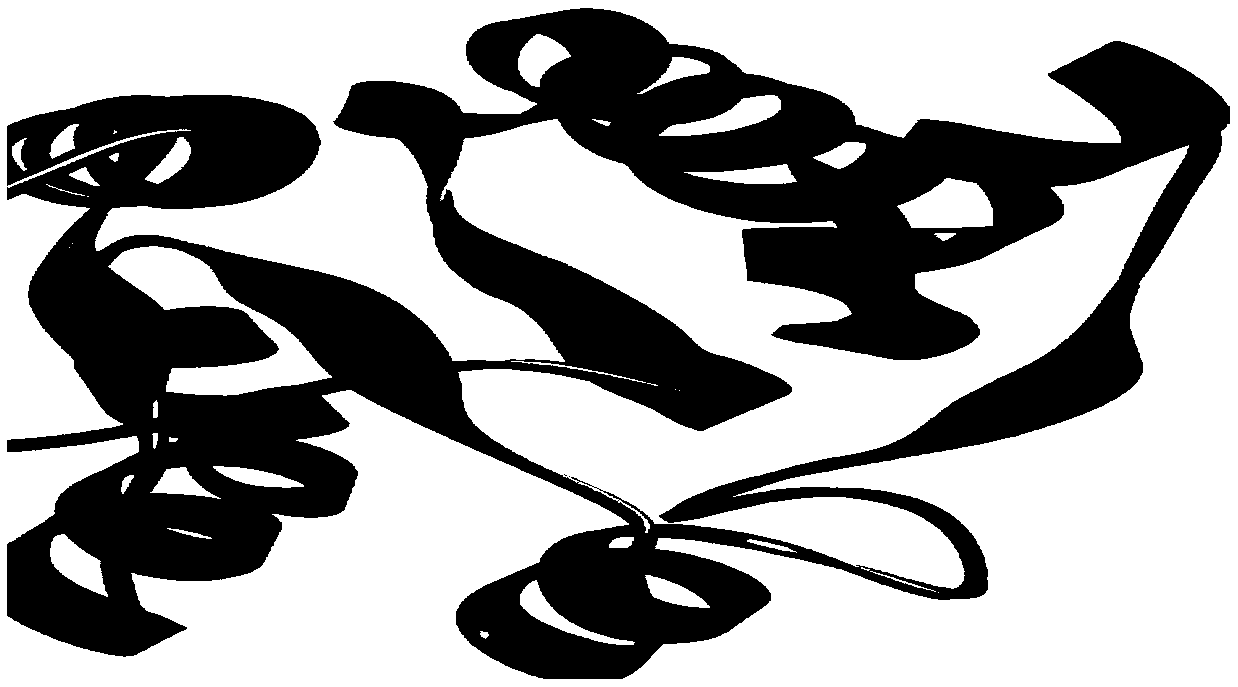Carbamyl phosphate synthetase mutant with effect of uridylic acid feedback inhibition resistance and application thereof
A carbamoyl phosphate and mutant technology, applied in the field of enzyme engineering, can solve problems such as reduced sensitivity
- Summary
- Abstract
- Description
- Claims
- Application Information
AI Technical Summary
Problems solved by technology
Method used
Image
Examples
Embodiment 1
[0023] Example 1: Mutation of the conserved site at the C-terminus of carbamyl phosphate synthase, recombinant expression plasmid
[0024] Four carbamoyl phosphate synthetases from different sources, including Escherichia coli, Corynebacterium glutamicum, Bacillus amyloliquefaciens and Bacillus subtilis, were selected for homologous sequence alignment of their allosteric regulatory domains ( figure 2 ), from which several conserved sites were selected, in order to reduce the binding of UMP, the hydrophilic amino acid residues were mutated into hydrophobic residues, or the size of the residues was enlarged to increase its steric hindrance, and the mutation sites The design was included in the primer sequence, and the sequence was sent to Shanghai Bioengineering Co., Ltd. for synthesis. The specific primer sequence is shown in Table 1.
[0025] Table 1 Sequence list of primers for site-directed mutagenesis
[0026]
[0027]
[0028] Preparation of the vector: PCR amplifi...
Embodiment 2
[0032] Example 2: cepPCR directed evolution of carbamoyl phosphate synthase
[0033] The carbamoyl phosphate synthase large subunit CarB from E.coli MG1655 has a total of 1073 amino acids and is divided into 4 functional domains, namely f1:1-403aa is the carboxylic acid phosphate synthesis domain, f2:404-553aa is the oligomerization domain F3:554-936aa is the carbamoyl phosphate synthesis domain and F4:937-1073aa is the allosteric regulatory domain. By changing the PCR reaction system and simulating natural evolution, site mutations are introduced into the large subunit CarB. The specific reaction system is as follows: wild-type carAB is used as a template, and cepPCR-F and cepPCR-R of each domain are used as upstream and downstream. Primers (see Table 2 for primer sequences), 1 μl of Taq DNA Polymerase, dATP, dGTP concentrations of 0.2 mM, dTTP, dCTP concentrations of 1 mM, Mg 2+ Concentration is 3mM, Mn 2+ The concentration is 0.2mM, add sterile water to a total volume of ...
Embodiment 3
[0050] Embodiment 3: expression and protein purification of mutant enzyme
[0051] Inoculate the 9 strains of recombinant bacteria obtained in Example 1 and Example 2 and Rosetta / pET28a-CarAB expressing wild type into 50ml LB containing 50μg / ml, shake at 37°C and 220rpm for 6h, and then transfer the bacteria Into 100ml of LB, 37°C, 220rpm culture to OD 600 =0.6-0.8, add IPTG with a final concentration of 0.2mM and induce at 18°C and 220rpm for 16h. Centrifuge at 6000rpm for 10min to collect the bacteria.
[0052] The protein was purified by Ni-NTA nickel column affinity chromatography. Resuspend the bacteria with 50ml of buffer solution (20mM Tris-HCl; 500mMNaCl; 10mM imidazole), then crush it by a pressure breaker, centrifuge at 6000rpm at 4°C for 20min, take the supernatant and load it onto a nickel column that has been equilibrated with buffer. The adsorbed protein was then gradiently eluted with loading buffers containing different concentrations of imidazole (0-150mM...
PUM
 Login to View More
Login to View More Abstract
Description
Claims
Application Information
 Login to View More
Login to View More - R&D
- Intellectual Property
- Life Sciences
- Materials
- Tech Scout
- Unparalleled Data Quality
- Higher Quality Content
- 60% Fewer Hallucinations
Browse by: Latest US Patents, China's latest patents, Technical Efficacy Thesaurus, Application Domain, Technology Topic, Popular Technical Reports.
© 2025 PatSnap. All rights reserved.Legal|Privacy policy|Modern Slavery Act Transparency Statement|Sitemap|About US| Contact US: help@patsnap.com



